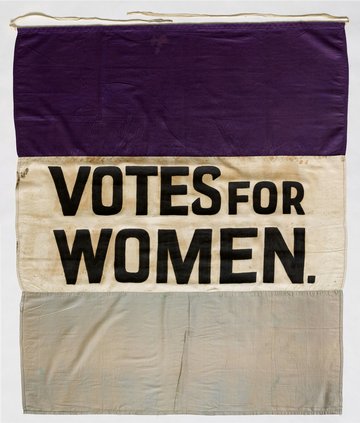
Women's Activism
Explore how South Asian women were engaged in political activism and social justice campaigns from the nineteenth century
Overview
South Asian women were actively engaged in British society and connected to other South Asians and minorities across the nineteenth, twentieth and twenty-first centuries. Early migration to Britain was usually characterized as overwhelmingly male, marked by labour, but in the nineteenth century women ayahs (nursemaids) were a significant feature of South Asian networks in Britain. By the early twentieth century, women were engaging in university study in Britain and becoming involved in anti-imperial activism and suffragism. Early examples include the cousins Dorf Bonarjee and Susila Bonnerjee, who were educated at Aberystwyth and Cambridge respectively and were both involved in suffrage activism.
South Asian women formed associations with other women across the twentieth century. Early examples include the Eastern League, which raised money for Indian soldiers in the First World War. The growing presence of South Asian women across the UK from the mid-twentieth century onwards necessitated the formation of feminist organizations which addressed racialized minority women’s intersectional needs. The pioneering organization OWAAD, which was founded in 1978, forged connections between local groups to address the issues facing Black and South Asian women. At a local level, South Asian women founded resource centres and refuges to support women in need, including Brent Asian Women’s Refuge and Resource Centre, Southall Black Sisters and Birmingham Black Sisters. These organizations often resisted discriminatory immigration practices, by protesting the Heathrow Airport virginity testing scandal and supporting the legal cases of South Asian women who were threatened with deportation by the Home Office, such as Afia Begum.
Newspapers and magazines were important mediums by which South Asian women shared ideas and engaged in resistance. Educator and activist Dina Abbott launched the anti-racist and anti-imperialist newspaper Samaj in’a Babylon in 1976. Activist Amrit Wilson published articles in the second-wave feminist magazine Spare Rib which addressed wide-ranging themes such as local anti-racist protests led by South Asian women and sexist immigration laws. Shaila Shah founded Outwrite magazine in 1982, an international feminist publication that campaigned against inequality, racism and imperialism.
By the 1970s South Asian women were active trade unionists and shaped labour relations and expectations. The Grunwick dispute led by Jayaben Desai was a pivotal moment in trade union activism and relations in modern British history, but South Asian women were also involved in other important trade union actions such as the Chix strike, Mansfield Hosiery strike, Imperial Typewriters strike and Gate Gourmet dispute.
Another interesting thing
Women writers from Cornelia Sorabji to Meera Syal have used literature to showcase their feminist, anti-imperial and anti-racist activism. Atiya Fyzee, for example, published Zamana-i-tahsil in 1921, a travelogue which documented her experiences as the first elite Indian Muslim woman to receive an education in Britain. Attia Hosain published Sunlight on a Broken Column in 1961, a semi-autobiographical coming-of-age novel set during the partition of India. The Asian Women Writers’ Collective, founded in 1984, promoted creative writing by South Asian women writers based in Britain, providing a supportive environment and enhanced access to publishing opportunities.
